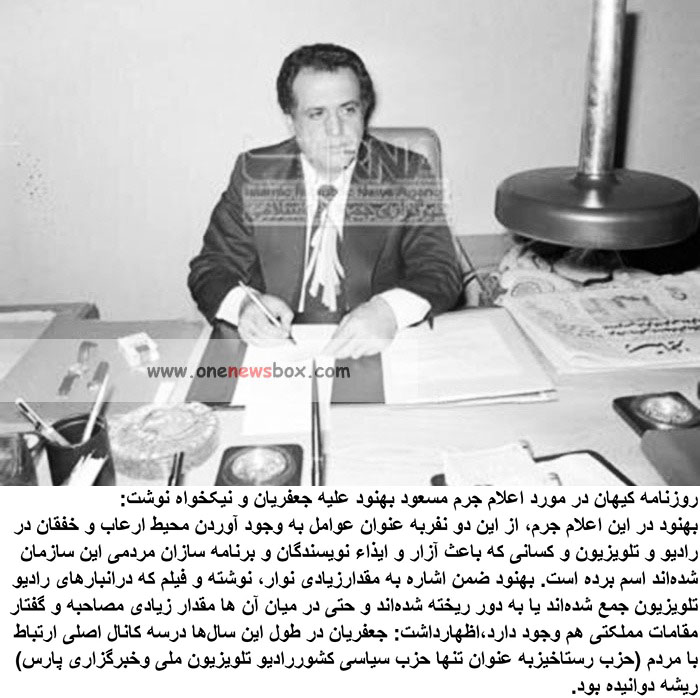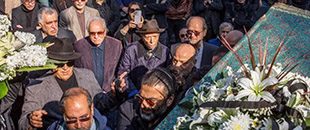The Media and Mechanisms of Control
Under Jafarian’s watch, the Iranian national media—radio, television, and the Pars News Agency—functioned not only as instruments of information but also as tools of ideological reinforcement. According to Masoud Behnoud, a journalist and cultural advisor under Prime Minister Amir-Abbas Hoveyda, Jafarian exercised significant control over media content and personnel.
Behnoud later wrote that Jafarian had become deeply embedded in Iran’s three major communication outlets: the Rastakhiz Party, NIRT, and Pars News Agency. Through these channels, Jafarian allegedly propagated “fabricated news” and suppressed dissenting voices. He is accused of orchestrating a climate of fear and repression, particularly against independent writers, intellectuals, and program creators who sought a more open cultural atmosphere. Programs and archives that included controversial or non-aligned views were reportedly destroyed or censored.
These assertions were brought into sharper relief after the 1979 Islamic Revolution. Behnoud himself would later file a formal indictment against both Jafarian and Parviz Nikkhah, another controversial figure with a revolutionary past who had shifted allegiances to work under the Shah’s regime. The indictment accused both men of contributing to an “environment of intimidation and suffocation” and holding direct responsibility for the harassment of cultural and media workers.
Behnoud highlighted how, under Jafarian’s leadership, massive volumes of historical media content—interviews, speeches, and creative works—were either discarded or hidden from public view. This not only impeded cultural development but also deprived future generations of historical memory.

